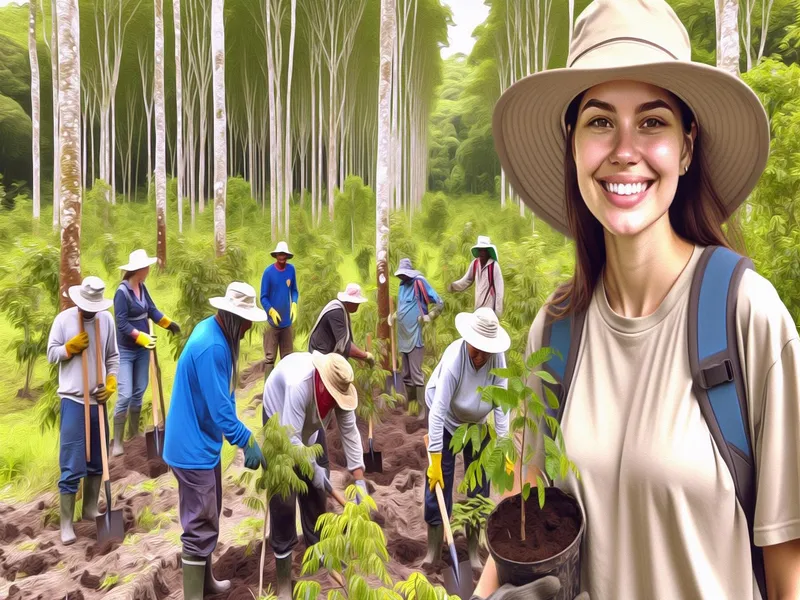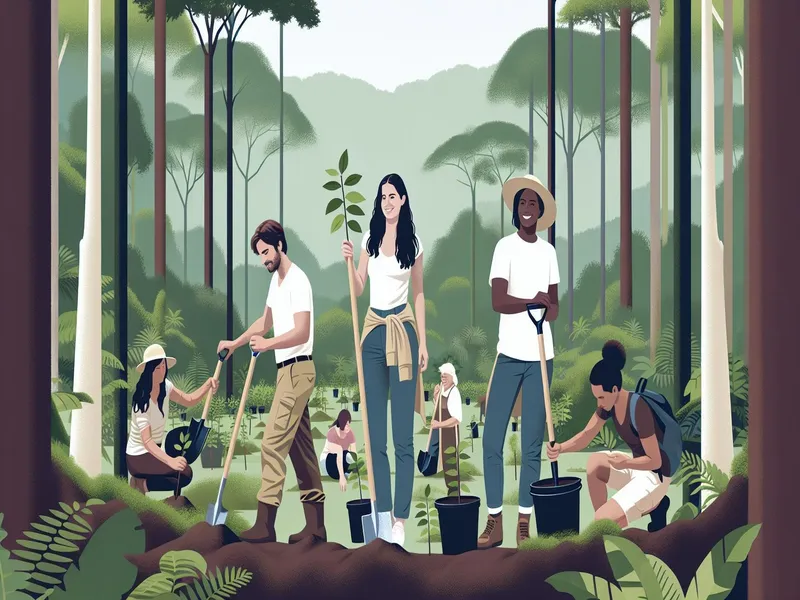
Whether you’re passionate about conservation, education, or community development, there’s a project that aligns with your interests and skills.
Ignoring the opportunity to volunteer while traveling means missing out on deeper cultural immersion and personal growth. You might end up feeling like just another tourist rather than someone who has truly connected with local communities. Plus, you’ll miss the chance to make a tangible difference in people’s lives.
I’ve spent years exploring volunteer opportunities across South America, from teaching English in Peru to wildlife conservation in Ecuador. My firsthand experiences have shown me how rewarding these journeys can be for both volunteers and host communities.
Different travelers seek different things—some want hands-on work with animals, others prefer educational roles. No matter your preference, there’s a program tailored to fit your goals and provide a fulfilling experience.
Trust me, diving into volunteer travel is one of the best decisions you can make. You’ll not only explore stunning landscapes but also build lasting connections and contribute positively to the world around you. For more ideas on enriching travel activities, check out our comprehensive guide.
What Is Volunteer Travel?
Volunteer travel, or “voluntourism,” blends the adventure of exploring new places with the fulfillment of making a positive impact. It’s like having your cake and eating it too—you get to see stunning landscapes and immerse yourself in local cultures while contributing to meaningful causes.
Imagine you’re trekking through the Amazon rainforest in Ecuador, but instead of just snapping photos for Instagram, you’re helping with wildlife conservation. Or picture teaching English to eager students in a small Peruvian village. These are experiences that go beyond typical sightseeing—they’re about building connections and leaving a lasting mark.
Key Components of Volunteer Travel:
- Service Projects: Involve tasks like community development, education, healthcare, or environmental conservation.
- Cultural Exchange: Offers a deeper understanding of local traditions and lifestyles compared to regular tourism.
- Personal Growth: Challenges you to step out of your comfort zone, fostering skills like adaptability and empathy.
Why Opt for Volunteer Travel?
If you’ve ever felt that urge to do more than just visit a place—if you want to be part of its story—volunteer travel is for you. You’ll gain insights into daily life that most tourists miss entirely. Plus, it’s incredibly rewarding seeing firsthand how your efforts make a difference.
Take my stint in Peru as an example. I helped teach English at a local school. The kids were amazing—so curious and full of energy! By the end of my stay, not only had their language skills improved but I also learned so much about resilience and joy from them.
How Does It Work?
Typically, you’ll join an organized program which arranges everything—from accommodation and meals to work assignments. These programs often partner with local organizations ensuring your help meets genuine needs.
- Choose Your Destination: Think about where you’d love to go and what issues matter most to you.
- Research Programs: Look for reputable organizations offering volunteer opportunities aligned with your interests.
- Prepare Yourself: Brush up on relevant skills or knowledge before departure (like basic Spanish phrases if heading to South America).
Why Choose South America?

Choosing South America for your volunteer travel can be like stepping into a vibrant, living world of cultures and landscapes. Let’s jump into what makes this continent so special.
Diverse Cultures
South America is a melting pot of cultures. Imagine being in Peru, surrounded by the echoes of ancient Incan civilization while modern life buzzes around you. Or picture yourself in Brazil during Carnival, where the streets pulse with samba rhythms and colorful parades.
- Indigenous Communities: Many regions still have thriving indigenous communities. For example, volunteering with the Quechua people in the Andes can give you firsthand insight into their traditions and daily life.
- Language Immersion: Spanish is spoken widely across most countries, but you’ll also encounter Portuguese in Brazil. Learning these languages on-site adds depth to your experience.
I remember teaching English in Bolivia and how it felt more like a cultural exchange than a classroom setting. The students were as curious about my culture as I was about theirs, making every lesson an adventure.
Breathtaking Landscapes
South America’s geography is incredibly diverse. From towering mountains to lush rainforests, there’s something for every nature lover.
- Amazon Rainforest: Volunteering in conservation projects here means working amidst the world’s largest tropical rainforest. It’s home to countless species you won’t find anywhere else.
- Andes Mountains: If you’re into trekking or mountaineering, imagine combining that passion with community service high up in the Andes.
One of my favorite memories is from Ecuador’s Galápagos Islands. Participating in wildlife conservation there allowed me to see giant tortoises up close while contributing to their habitat preservation efforts.
Choosing South America for volunteer travel isn’t just about visiting—it’s about truly experiencing and contributing to its rich world of life and landscapes.
Popular Volunteer Programs

Interested in making a difference while exploring South America? Here are some popular volunteer programs that combine adventure with meaningful work.
Environmental Conservation
Imagine hiking through lush rainforests, planting trees, and learning about ecosystems. In South America, environmental conservation programs offer just that. I once joined a reforestation project in the Amazon rainforest. We planted native trees and learned how vital they are for local wildlife and climate regulation. These programs often include:
- Tree planting
- Clean-up drives
- Sustainable farming
These activities help protect our planet while letting you immerse yourself in nature.
Community Development
Ever thought about helping build a school or teaching English to kids? Community development programs let you do just that. In Peru, I worked with a team to construct classrooms in a remote village. It was tough but incredibly rewarding when we saw the smiles on the kids’ faces. Typical projects include:
- Building infrastructure
- Educational outreach
- Health campaigns
These efforts make tangible improvements in people’s lives and provide deep cultural insights.
Wildlife Rescue
Got a soft spot for animals? Wildlife rescue programs might be your thing. Picture this: you’re feeding baby sloths or nursing injured parrots back to health. During my time at an Ecuadorian sanctuary, I helped rehabilitate rescued animals and prepare them for release into the wild. Common tasks involve:
- Animal feeding
- Habitat maintenance
- Veterinary assistance
Working up close with exotic creatures is both exciting and fulfilling.
By engaging in these volunteer opportunities, we can contribute positively while experiencing South America’s diverse cultures and breathtaking landscapes firsthand.
Planning Your Trip
Planning your volunteer travel trip to South America can be an exciting yet overwhelming process. Let me break it down for you so that it’s easier to manage.
Choosing a Program
Choosing the right program is crucial. First, think about what you’re passionate about. Are you interested in wildlife conservation, teaching English, or community development? When I decided to volunteer in Ecuador, I picked a wildlife rescue center because I’m an animal lover. Do some research and read reviews from past volunteers on platforms like GoAbroad or Volunteer Forever. Look for programs that align with your interests and values. Make sure they have a good track record and clear objectives.
Budgeting
Budgeting is key for a seamless process. Start by listing all potential expenses: program fees, flights, accommodation, food, local transportation, and personal costs (like souvenirs or weekend trips). For instance:
| Expense | Estimated Cost |
|---|---|
| Program Fees | $500 – $2000 |
| Round-trip Flights | $600 – $1200 |
| Accommodation | $10 – $30/day |
| Food | $5 – $15/day |
When I volunteered in Peru, my biggest surprise was how affordable local food was—delicious meals often cost less than a fast-food burger back home! Save up beforehand and consider fundraising options if needed.
Safety Tips
Safety should always be top of mind when traveling abroad. First off, get travel insurance; it’s non-negotiable. Next, keep copies of important documents (passport, visa) both digitally and physically. Always inform someone you trust about your whereabouts—whether it’s daily updates via WhatsApp or sharing your itinerary on Google Drive. In my case while volunteering in rural Bolivia, having emergency contacts saved on my phone came in handy when our group got lost during a trek.
- Avoid flashy jewelry.
- Learn basic phrases in Spanish.
- Use reputable transportation services.
Personal Experiences
When I think back on my time volunteering in South America, it’s like flipping through a photo album filled with vibrant memories. I’ve met amazing people, faced unique challenges, and come away with stories worth sharing.
Success Stories
One of my favorite experiences was teaching English in a small village in Peru. Imagine standing in front of eager students who are just as curious about you as they are about learning. These kids weren’t just learning a new language—they were opening doors to future opportunities. It’s gratifying when you see someone grasping a concept you’ve explained.
Another unforgettable moment happened during my stint with wildlife conservation in Ecuador. Picture this: I’m deep in the Amazon jungle, helping rehabilitate injured animals. One day, we released a rescued parrot back into the wild. Watching it soar high above the trees was magical—it felt like I was part of something much bigger than myself.
Challenges Faced
Of course, not everything was smooth sailing. Volunteering abroad comes with its share of hurdles. For instance, adapting to different cultural norms can be tricky. In one community development project, misunderstandings arose over work schedules because locals had different concepts of time management compared to what I was used to.
Language barriers also posed challenges—imagine trying to explain complex tasks without speaking the local dialect fluently! During my first week at an environmental conservation site in Bolivia, miscommunication led me to plant saplings incorrectly; we had to redo an entire day’s work.
Even though these bumps along the way, each challenge taught me resilience and adaptability—skills that have proven invaluable both during my travels and back home.
This section aims to give readers (#ICP) an authentic glimpse into what volunteer travel really entails—the highs that make your heart swell and the lows that teach you important life lessons.
Summary
Volunteer travel in South America offers a unique blend of adventure and meaningful experiences that go beyond typical tourism. By engaging with local communities and contributing to important projects, you gain deeper cultural insights and personal growth. From teaching English in Peru to wildlife conservation in Ecuador, the rewards are immense for both volunteers and locals.
Choosing South America immerses you in diverse cultures and breathtaking landscapes while making a positive impact. Whether you’re passionate about environmental conservation or community development, there’s an opportunity waiting for you. With careful planning and preparation, your volunteer journey can be an enriching experience that leaves lasting memories.
So pack your bags embrace the unknown and begin on a volunteer travel adventure that will transform not only your perspective but also the lives of those you touch along the way.